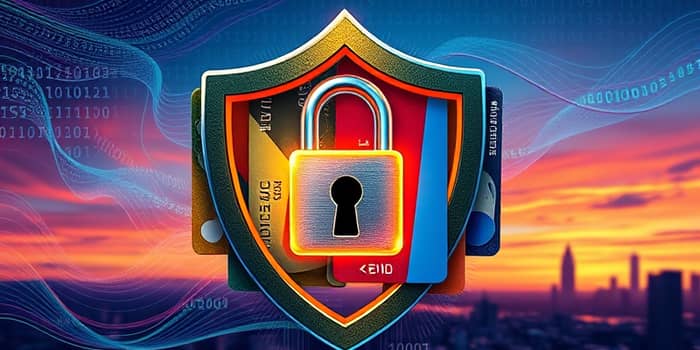In a world increasingly reliant on digital payments and online transactions, our financial identities have become increasingly vulnerable to fraud. Every swipe, tap, or click carries the potential risk of exposing sensitive details to malicious actors. As pioneers and participants in this digital economy, we must equip ourselves with knowledge and tools to defend against threats that can upend our lives. This comprehensive guide will not only inform you of the dangers, but also provide actionable steps to safeguard your credit card information and personal data.
Introduction to Identity Theft
Identity theft occurs when a malicious actor steals another person’s personal and financial information without consent. These criminals may use stolen details to make unauthorized purchases, open fraudulent accounts, or secure loans under another’s name. Victims often face immediate monetary losses, but the consequences can extend far beyond the size of a stolen charge.
The impact can be devastating, causing significant economic and psychological impacts that extend far beyond the initial breach. Individuals may spend months or even years resolving fraudulent debts, repairing damaged credit scores, and restoring their reputation. This stressful process often leads to anxiety, sleepless nights, and a pervasive fear of trusting digital channels in the future.
The scope of this problem is staggering:
These figures reflect just the reported cases. Many victims never realize their identities have been compromised, underscoring the importance of proactive vigilance and continuous monitoring.
Causes and Trends in Identity Theft
The digital landscape has expanded opportunities for convenience but also for exploitation. Cybercriminals exploit technical vulnerabilities in networks and applications, as well as human weaknesses. Data breaches at major corporations can expose millions of records in seconds, while social engineering campaigns prey on unsuspecting individuals.
- Rise of digital transactions fueling online identity fraud, now accounting for over 70% of all cases.
- Economic downturn correlation leading to spikes in malicious activity as fraudsters seek alternative income.
- Advanced AI-driven scam sophistication enabling criminals to automate phishing, generate realistic deepfakes, and bypass traditional defenses.
- Synthetic identity fraud, where perpetrators combine real and fictitious data to create untraceable profiles.
- Credit card fraud persists at alarming rates, with over 416,000 reported U.S. cases last year.
Collaborative hacking rings and underground marketplaces trade stolen credentials, credit card numbers, and personal records at scale. Each piece of data can be used, traded, or monetized, fueling a persistent cycle of crime that thrives on anonymity and speed. Staying ahead requires not only technological safeguards but also a deep understanding of emerging schemes.
Protecting Credit Card Information
Companies that process, store, or transmit credit card data must comply with the Payment Card Industry Data Security Standard (PCI DSS). This rigorous framework mandates 12 core requirements, including network security measures, vulnerability management programs, access controls, and regular testing. Businesses undergo quarterly scans, annual audits, and must maintain comprehensive documentation to demonstrate compliance.
Compliance is not a one-time effort—it demands ongoing vigilance and periodic assessments to adapt to new threats. Failure to comply can result in heavy fines, legal liabilities, and reputational damage that may dwarf the cost of implementing proper security controls.
Encryption transforms card details into data unreadable during transit and at rest, preventing unauthorized third parties from interpreting intercepted information. Tokenization further secures the data by replacing primary account numbers with randomly generated tokens. Even if a breach occurs, exposed tokens cannot be traced back to the original card information.
Consumers can reinforce these corporate safeguards with personal best practices:
- Use secured home or mobile networks instead of public Wi-Fi when accessing financial accounts.
- Set up real-time fraud alerts to receive immediate notifications of suspicious charges.
- Enable two-factor authentication on all banking and shopping platforms to add an extra verification layer.
- Regularly review credit card statements, and dispute unfamiliar transactions promptly.
By meshing institutional protections with individual diligence, the barrier against unauthorized access becomes significantly stronger.
Preventing Identity Theft
Education and awareness are paramount. Scammers often use high-pressure tactics, such as fake urgencies or emotional appeals, to trick victims into sharing personal data. Understanding the hallmarks of phishing emails—misspellings, unsolicited requests for information, and disguised sender addresses—can help you avoid common traps.
Adopt these preventive habits to safeguard your identity:
- Freeze credit reports when not actively seeking loans, effectively blocking new account openings in your name.
- Monitor your financial and utility accounts daily, using mobile alerts and online dashboards.
- Utilize credit monitoring services and identity theft insurance to gain an added layer of protection and peace of mind.
- Shred physical documents containing account numbers, social security digits, or personal identifiers before disposal.
Ensure that every family member, including children and seniors, understands the basics of cyber hygiene. A single compromised account can cascade into widespread fraudulent activity, making collective efforts vital to community resilience.
Conclusion
Identity theft remains a formidable adversary, but with informed strategies and consistent action, you can mitigate the risk and shield your personal data. Embrace proactive protection and monitoring routines to detect anomalies early and respond swiftly.
Remember, security is not a destination but a journey. Regularly update passwords, adopt secure authentication methods, and stay abreast of the latest scam alerts. Each measure you take contributes to building a safer digital community, where trust and transparency become the cornerstones of our interconnected lives.
Together—consumers, businesses, and regulators—we can forge a robust defense against identity theft, ensuring that the convenience of modern transactions is matched by uncompromising safeguards for our financial well-being.
References
- https://snappt.com/blog/identity-fraud-statistics/
- https://www.metomic.io/resource-centre/how-to-detect-and-protect-credit-card-exposure-in-the-cloud
- https://www.security.org/identity-theft/statistics/
- https://www.lawpay.com/about/blog/storing-credit-card-information/
- https://www.consumeraffairs.com/finance/identity-theft-statistics.html
- https://www.fidelity.com/learning-center/personal-finance/10-credit-card-security-tips
- https://www.ftc.gov/news-events/news/press-releases/2025/08/ftc-data-show-more-four-fold-increase-reports-impersonation-scammers-stealing-tens-even-hundreds
- https://controller.ucsf.edu/how-to-guides/accounts-receivable-banking-services/understanding-payment-card-industry-data-security
- https://www.experian.com/thought-leadership/business/identity-and-fraud-report
- https://gr4vy.com/posts/how-to-store-card-data-safely-the-ultimate-guide-for-2024/
- https://lifelock.norton.com/learn/credit-finance/protect-your-credit-card
- https://www.ipx1031.com/fraud-data-study/
- https://usa.visa.com/support/consumer/security.html
- https://learn.g2.com/identity-theft-statistics
- https://www.pcisecuritystandards.org/standards/










